Home![]() books
books
![]() ecology
ecology![]() Latest info
Latest info![]() from space
from space
![]() Encyclopedia
Encyclopedia![]() Animals
Animals![]() Plants
Plants![]() Climat
Climat![]() Research
Research![]() The world beneath Baikal
The world beneath Baikal![]() Geology
Geology![]() Circumbaikal railroad
Circumbaikal railroad![]() Photogallery # 1
Photogallery # 1![]() Photogallery # 2
Photogallery # 2![]() Photogallery # 3
Photogallery # 3![]() Listvyanka
Listvyanka![]() Natives
Natives![]() In German
In German![]() Word of poet
Word of poet![]() Olkhon island
Olkhon island![]() Earthwatch
Earthwatch
![]() Shopping
Shopping![]() Travel agences
Travel agences![]() Guestbook
Guestbook
![]()
![]() Images
of the Baikal from various sources
Images
of the Baikal from various sources
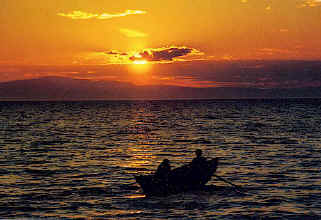 Lake
Baikal lies in eastern Siberia (lng. 104 to 110 deg. E.; lat. 51 deg. 20
s. to 55 deg. 20 s. N.). It is the third largest lake in Russia and the
eighth largest in the world, with an area of 12,162 sq. mi. The outline
of the lake is long and narrow, its length being 395 mi. and its width varying
from 15 to 49 mi. Its surface is 1,486 ft. above sea level. The lake is
walled in by mountains, extensions of the Sayan mountains. There are 18
islands in the lake, the biggest being Olkhon Island.
Lake
Baikal lies in eastern Siberia (lng. 104 to 110 deg. E.; lat. 51 deg. 20
s. to 55 deg. 20 s. N.). It is the third largest lake in Russia and the
eighth largest in the world, with an area of 12,162 sq. mi. The outline
of the lake is long and narrow, its length being 395 mi. and its width varying
from 15 to 49 mi. Its surface is 1,486 ft. above sea level. The lake is
walled in by mountains, extensions of the Sayan mountains. There are 18
islands in the lake, the biggest being Olkhon Island.
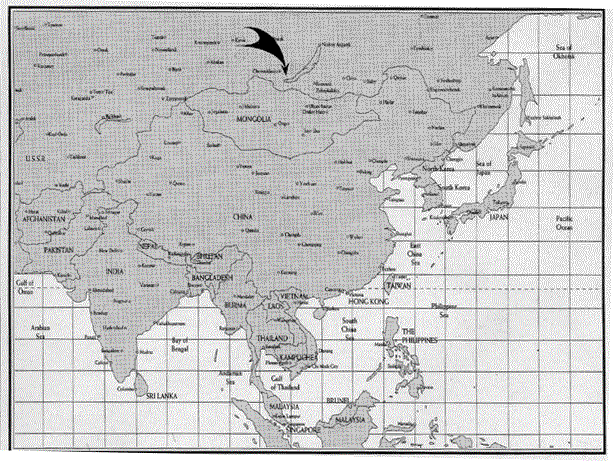
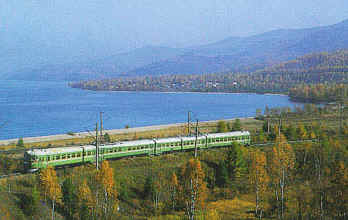 The origins of the lake are tectonic, the deep depression in which it lies
being formed by faulting. The fringing mountains rise steeply to a maximum
height of 8,445 ft., while the lake has a maximum depth of 5,315 ft., making
it the deepest in the world. Movement is still continuing and earthquakes
occur around the lake.
The origins of the lake are tectonic, the deep depression in which it lies
being formed by faulting. The fringing mountains rise steeply to a maximum
height of 8,445 ft., while the lake has a maximum depth of 5,315 ft., making
it the deepest in the world. Movement is still continuing and earthquakes
occur around the lake.
Lake Baikal has 336 tributary rivers, several of which are of
considerable size - the Selenga, Barguzin and Upper Angara. The outlet for the
lake is the Angara, a tributary of the Yenissei.
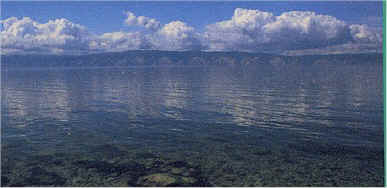 |
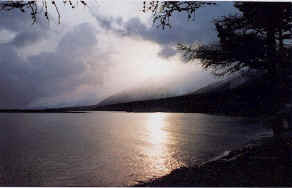 |
|
 |
Lake Baikal is characterized by low annual average temperatures
of the surface water, 40 degrees F in the south, 37 degrees F in
central Baikal. Maximum temperatures occur in September and only in rare
years pass 50 degrees F. Below 700 ft. the water temperature remains constant
at about 39degrees F.
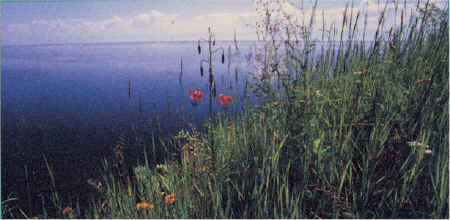
Winter is clearly the dominant season, as much by its unchangeableness during
many weeks as by its severity. Winter is notably dry and cold. Days without
snow are few. Precipitation varies from 10 to 14 inches. The mean January
temperature is -5 degrees F. Spring arrives in April. The ice on
the lake breaks up rapidly. As the snow melts, the ground soon dries and
a brief period of delightful spring weather is experienced, though often
interrupted by the return of severe cold for a short time. Summer follows
quickly. The days are warm or hot (July mean is 65 degrees F) and the hours
of daylight long. The summer, though it has often long periods of drought,
is interrupted by brief, but heavy rainstorms. Precipitation is about 12
in.
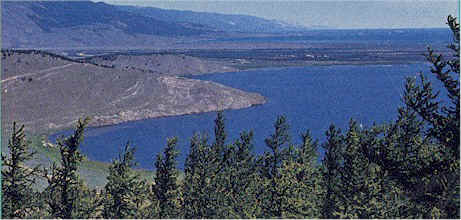
Lake Baikal is remarkable for the richness of its fauna and
flora. Of the 1700 species identified there, 1080 are not found anywhere
else in the world. The lake is rich in plankton. The one mammal is the Baikal
seal. Salmon, omul of the salmon family, bullheads and peculiar fish, called
the "golominka , which is almost one mass of fat, are typical Baikal
fishes.

The slopes of the mountains around Lake Baikal are well wooded with alder, aspen, birch, and larch. Siberian fir and pine are mixed with spruce and scotch pine.
Links::
Home![]() Books
Books ![]() Ecology
Ecology![]() Latest
info
Latest
info
![]() from
space
from
space ![]() Encyclopedia
Encyclopedia
![]() Animals
Animals![]() Plants
Plants![]() Climat
Climat![]() Research
Research![]() The world beneath Baikal
The world beneath Baikal![]() Geology
Geology![]() Circumbaikal railroad
Circumbaikal railroad![]() Photogallery # 1
Photogallery # 1![]() Photogallery # 2
Photogallery # 2![]() Photogallery # 3
Photogallery # 3![]() Listvyanka
Listvyanka![]() Natives
Natives![]() In German
In German![]() Word of poet
Word of poet![]() Olkhon island
Olkhon island
![]() Earthwatch
Earthwatch
![]() Shopping
Shopping![]() Travel agences
Travel agences![]() Guestbook
Guestbook
realvideo
![]() Transsiberian
railway.
Transsiberian
railway.![]() Inside
the train at Transsiberian railway,download .mov 468kb
Inside
the train at Transsiberian railway,download .mov 468kb![]() Circumbaikal
railway
Circumbaikal
railway![]() Lake
Baikal beauty
Lake
Baikal beauty![]() Yachts
at Baikal
Yachts
at Baikal![]() Brown
bears at lake Baikal shores in spring
Brown
bears at lake Baikal shores in spring![]() Aqualangist
under Baikal ice
Aqualangist
under Baikal ice![]() At
lake Baikal beneath
At
lake Baikal beneath![]() Baikal
nerpas
Baikal
nerpas![]() History
of Trans-Siberian
railway
History
of Trans-Siberian
railway
![]()
|
|
|